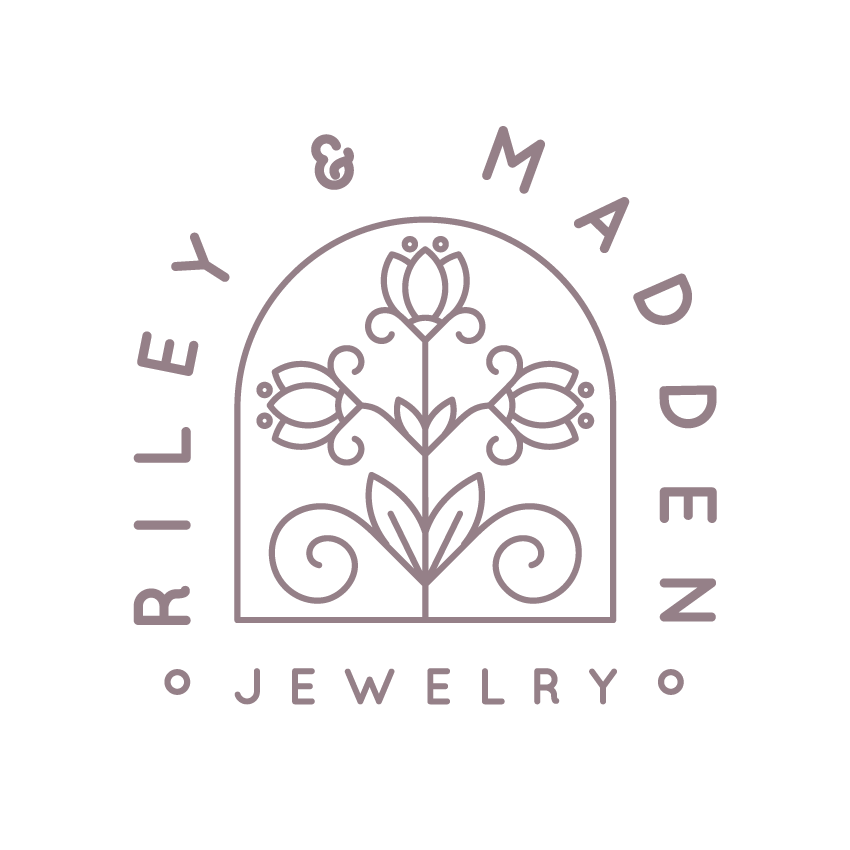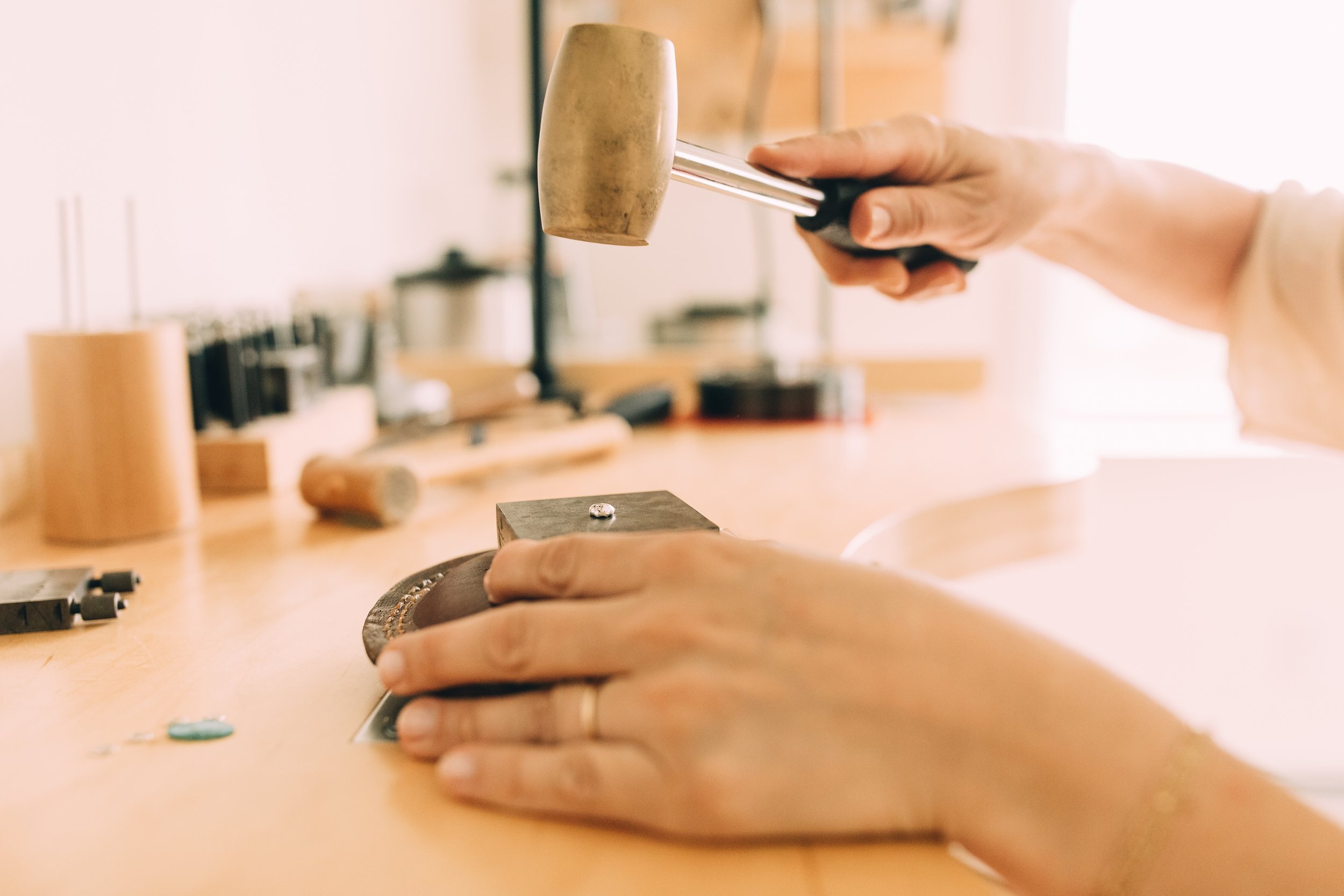Are you interested in buying gold jewelry, but confused by the terminology and uncertain descriptions used to describe it? You’re not alone. The world of metals and alloys can be confusing, especially when the gold options all kind of sound the same.
If you’re looking for a piece of jewelry to stand the test of time, it might be worth investing in solid gold. Gold filled on the other hand, offers the same elegance without breaking the bank. Gold plated is super affordable, but is it going to turn my skin green? What exactly are the differences???
Knowing about the differences can help you make an informed decision and pick out the perfect piece of jewelry to match your needs and budget.
We’ve got all the information you need to make an educated decision, so keep reading!
Dangling gold chain. Photo by Erin Witkowski
Unlock the Mystery of Solid Gold
Pure solid gold is also called 24K gold. 24K gold is malleable or soft. Since its malleability doesn’t lend itself to making durable jewelry, alloys are added to give it strength. The alloys and gold are melted together to form a new homogenous solid metal. By alloying pure gold with other metals, we can achieve a range of karats, from 22K all the way down to 10K. The K refers to the carotage of the metal which is a measure of purity, or how much pure gold is in the metal. So, if 24K gold is pure gold, or 100% gold, that means the lower the karat the less pure gold there is in the metal. see footnote This not only gives us more durable options for jewelry-making, but it also allows us to explore various gold tones. Alloy the gold with more silver and a bit of palladium, you get white gold. Alloy the gold with less silver and more copper, you get rose gold. (www.gold.org)
The benefits to buying and wearing solid gold jewelry are that the gold will never chip off or wear away, and it holds its value over time. You can always melt it down and create something new! It is also the most expensive with an ounce of 24K gold being about $1921. (Business Insider 6/25/23) In my opinion, you can never go wrong with solid gold. It’s just, do you want to spend that much on that piece of jewelry?
Michelle in her home studio melting fine silver casting grain. Photo by Erin Witkowski
Michelle in her home studio hammering the melted fine silver into a disc like shape to create a pendant. Photo by Erin Witkowski
What makes a piece of jewelry gold filled?
Gold filled is 12 or 14 karat gold bonded to a brass core. The two metals are bonded together using heat and pressure. Gold-filled jewelry allows you to incorporate the timeless look of gold into your collection, but at a fraction of the cost of solid gold. Gold-filled jewelry offers more value and durability than gold plated since gold filled materials contain a thick layer of gold—not just a microscopic plating. (Rio Grande) Take a look at the illustration on the right by Halstead. There is 100 times the amount of gold in gold filled than there is the same piece of gold plated jewelry! Take that into consideration the next time you are making a jewelry purchase. I always tell my customers, if you take care of your gold filled jewelry, it will wear just the same as your solid gold jewelry. It’s a jewelry addicts best kept secret!
What is gold plated?
Gold plated is metal that has been electroplated with a very thin layer of karat gold (typically 14K or 18K). (Federal Trade Commission page 44) This process gives you the gold look, but since the layer is so thin it is easily damaged. Normal everyday wear will take away the layer of gold and leave the base metal fully exposed. This is why you see tarnish so quickly on plated pieces. It’s tarnished base metal, which does not look pretty and can cause skin irritation. In my opinion, plated jewelry is best for jewelry that is worn only a few times a year.
Comparison of the amount of gold alloy that would be found
on a cross-section of gold-filled and gold-plated wire. (www.halsteadbead.com )
Conclusion
Michelle adding a gold filled permanent bracelet with sterling silver beads to one of her customers. Photo by Erin Witkowski
Deciding between solid gold, gold filled, and gold plated jewelry depends on your preferences when it comes to cost and durability. Solid gold has a higher cost, but will hold its value over time. Gold filled has more value than gold plated as its layer of gold is thicker and more durable. Gold plated jewelry is more affordable, but its thin layer of karat gold can easily wear away due to normal use. Ultimately, by understanding the differences between these three metals for jewelry, you can make an informed decision that fits within your budget and lifestyle. How will you choose? What metal suits your needs?
Footnote
Here is a breakdown that explains it.
24K - 24 out of 24 parts are pure gold -> 100% (but we say 99.99% because there is room for variability of trace minerals)
22K - 22 out of 24 parts are pure gold -> 22/24 -> 91.6%
18K - 18 out of 24 parts are pure gold
14K - 14 out of 24 parts are pure gold
And so on (www.gold.org )
In the US, when jewelry is made of 10K or higher we say that it is solid gold.
So, a ring in 18K would be more expensive than the same exact ring in 14K because there is more gold, but the 18K ring would be a bit more prone to scratches than the 14K ring.





